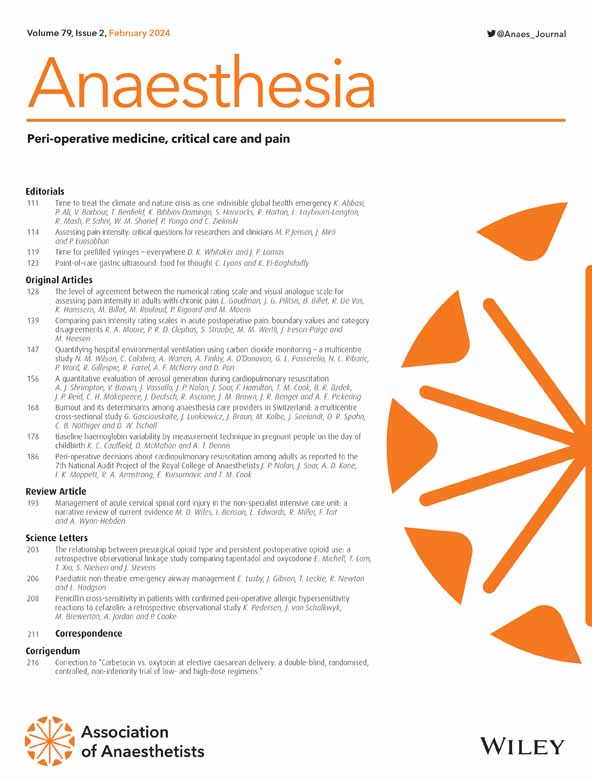开发,外部验证和集成到临床工作流程的机器学习模型,以支持英国的术前评估。
IF 6.9
1区 医学
Q1 ANESTHESIOLOGY
引用次数: 0
摘要
手术治疗的需求正在增长,患者的复杂性也在增加。NHS英格兰标准合同现在要求术前服务风险分层和优化等待手术的患者。然而,当前的术前工作流程(无论是电子的还是纸质的)仍然主要基于资源密集型的手工任务。缺乏实时数据传输已被确定为减少手术积压的关键限制。方法我们在一个实时术前评估系统(Smart PreOp, Aire Logic Ltd, Leeds, UK)和英国NHS GP Connect系统之间建立了认证的电子链接,直接从全科医生记录中检索临床数据到术前问卷。我们开发了机器学习模型,根据患者预测的ASA身体状况(1或2 vs. 3-5)和术后30天死亡风险将患者分为低风险和高风险队列。与之前的预测模型研究相比,我们从一开始就将变量选择限制在所有英国外科患者的实时电子变量上,而不管他们在哪里(建议的手术,人口统计和药物清单)。结果:开发队列和外部验证队列分别由使用不同电子记录系统的两个NHS信托机构的110,732和67,878名患者组成。在外部验证中,在决策阈值为0.2时,ASA身体状态预测模型识别低风险(ASA身体状态为1或2)患者的召回率为0.69,精度为0.95。死亡率预测模型在外部验证中具有良好的判别性,但校准效果较差,这支持了现有的文献,表明医院特异性建模可以改善死亡率风险预测。智能PreOp系统的技术架构有助于医院特定的建模和定期模型更新。我们的结论是,与系统开发一起进行建模可以产生准确的预测模型,可以直接实施到电子健康记录中。临床影响和可接受性的前瞻性研究是必要的。本文章由计算机程序翻译,如有差异,请以英文原文为准。
Development, external validation and integration into clinical workflow of machine learning models to support pre-operative assessment in the UK.
INTRODUCTION
Demand for surgical treatment is growing and patient complexity is increasing. The NHS England standard contract now requires that pre-operative services risk stratify and optimise patients awaiting surgery. However, current pre-operative workflows (whether electronic or paper-based) remain based primarily on resource-intensive manual tasks. Lack of real-time data transfer has been identified as a key limitation to reducing the surgical backlog.
METHODS
We developed certified electronic linkages between a live pre-operative assessment system (Smart PreOp, Aire Logic Ltd, Leeds, UK) and the GP Connect system from NHS England to retrieve clinical data directly from general practitioner records into pre-operative questionnaires. We developed machine learning models to categorise patients into lower- and higher-risk cohorts based on their predicted ASA physical status (1 or 2 vs. 3-5) and 30-day postoperative mortality risk. In contrast with previous prediction modelling studies, we constrained variable selection from the outset to variables that are available electronically in real time for all UK surgical patients regardless of where they present (the proposed procedure, demographics and medications lists).
RESULTS
The development and external validation cohorts consisted of 110,732 and 67,878 patients, respectively, from two NHS Trusts using different electronic record systems. In external validation, at decision threshold 0.2, the ASA physical status prediction model had recall 0.69 and precision 0.95 for identifying lower-risk (ASA physical status 1 or 2) patients. The mortality prediction model discriminated well in external validation but was poorly calibrated, lending support to the existing literature showing that hospital-specific modelling improves mortality risk prediction. The technical architecture of the Smart PreOp system facilitates such hospital-specific modelling and periodic model updates.
DISCUSSION
We conclude that conducting modelling together with systems development can yield accurate prediction models that may be implemented directly into electronic health records. A prospective study of clinical impact and acceptability is warranted.
求助全文
通过发布文献求助,成功后即可免费获取论文全文。
去求助
来源期刊

Anaesthesia
医学-麻醉学
CiteScore
21.20
自引率
9.30%
发文量
300
审稿时长
6 months
期刊介绍:
The official journal of the Association of Anaesthetists is Anaesthesia. It is a comprehensive international publication that covers a wide range of topics. The journal focuses on general and regional anaesthesia, as well as intensive care and pain therapy. It includes original articles that have undergone peer review, covering all aspects of these fields, including research on equipment.
 求助内容:
求助内容: 应助结果提醒方式:
应助结果提醒方式:


